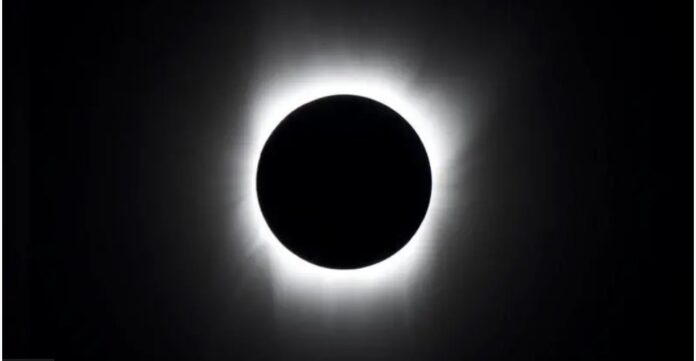On Monday, April 8, residents of North America will have the opportunity to observe a total solar eclipse, while evening falls in the Eastern Hemisphere. This natural phenomenon will be visible in Mexico, USA and Canada.
The partial eclipse of the solar disk will be an observable phenomenon in most of North America, in northwestern Europe, some islands of Oceania, and also in the north of the South American continent.
Ukrainians will not have the opportunity to observe the eclipse directly, but they can watch it through a live broadcast on NASA's YouTube channel. The BBC will also broadcast.
The maximum peak of the eclipse will occur at 21:17 Kyiv time (18:17 GMT) and will last 4 minutes.
For scientific researchers, the four minutes when the moon's shadow darkens the sun will be a time for various scientific experiments.
Scientists will launch rockets along the path of the shadow, observe animals in zoos, send radio signals around the world, and point cameras and telescopes into the sky using the temporary darkness. An astrophysicist from the University of Arizona, Erica Hamden, shared with the BBC what exactly is special about this eclipse.
"It's really exciting," the scientist said. "If you're lucky enough to be in the right place, you'll be able to see the Moon completely cover the Sun."
This, according to her, will be an incredible visual effect that cannot be confused with another.
"Everything will become very dark, the animals will quiet down because they will think that evening is coming," said Hamden. "The sun will appear to be setting in all directions of the horizon. Stars will appear immediately after it. It will also be possible to see the solar corona - the outer shell of the Sun's atmosphere."
"It will look like petals falling from him. This is a really exciting phenomenon," the scientist added.
According to Hamden, total solar eclipses are quite rare events. She noted that three or four of them are expected this decade.
Some of them will pass across the ocean or through the pole, and no one will see them.
But the current eclipse is quite unique in that it will cover all of North America, passing through a very densely populated area.
A total solar eclipse occurs when the Sun, Earth, and Moon line up and the Moon completely blocks the sunlight.
Such a phenomenon occurs about once every few years, when the Moon is exactly between the Earth and the Sun, but it is observed only in certain areas on the Earth's surface.
During an eclipse, the Moon projects a shadow in the shape of a cone, the top of which may be on the Earth's surface. In this case, the shadow cone describes our planet with a certain curve, which is called a full phase band. People in areas covered by this band will see a total eclipse.
The total eclipse will be witnessed only by those who will be in the zone called the "path of totality" - this is a strip on the Earth's surface where the Moon will completely cover the Sun's disk.
In 2024, the "path of totality" will pass through the countries of North America: from Mexico through Texas, the northern border of the state of New York and to the "New England" region in the USA.
The next total solar eclipse will occur in August 2026. So if you miss it, you'll have to travel to Spain. During the peak of the eclipse, the solar corona will be visible - actually the atmosphere of our star, which scientists have been trying to study for centuries.
This mysterious part of the Sun consists of magnetized plasma and has a temperature of more than a million degrees Celsius.
Normally, because of the Sun's enormous brightness, the corona is impossible to see, but on Monday, scientists from Dallas will have the opportunity to point instruments at it and take pictures.
Researchers from the University of Aberystwyth in Wales and the American space agency NASA hope to gain insight into the solar wind, the plasma ejected from the Sun's surface.
Another mystery is why the corona appears to be much hotter than the surface of the Sun, even though it is located on the periphery of the luminary.
They may even be able to capture the so-called coronal mass ejection, when huge clouds of plasma are ejected from the solar atmosphere into space. These emissions can affect the operation of artificial satellites of the Earth.


